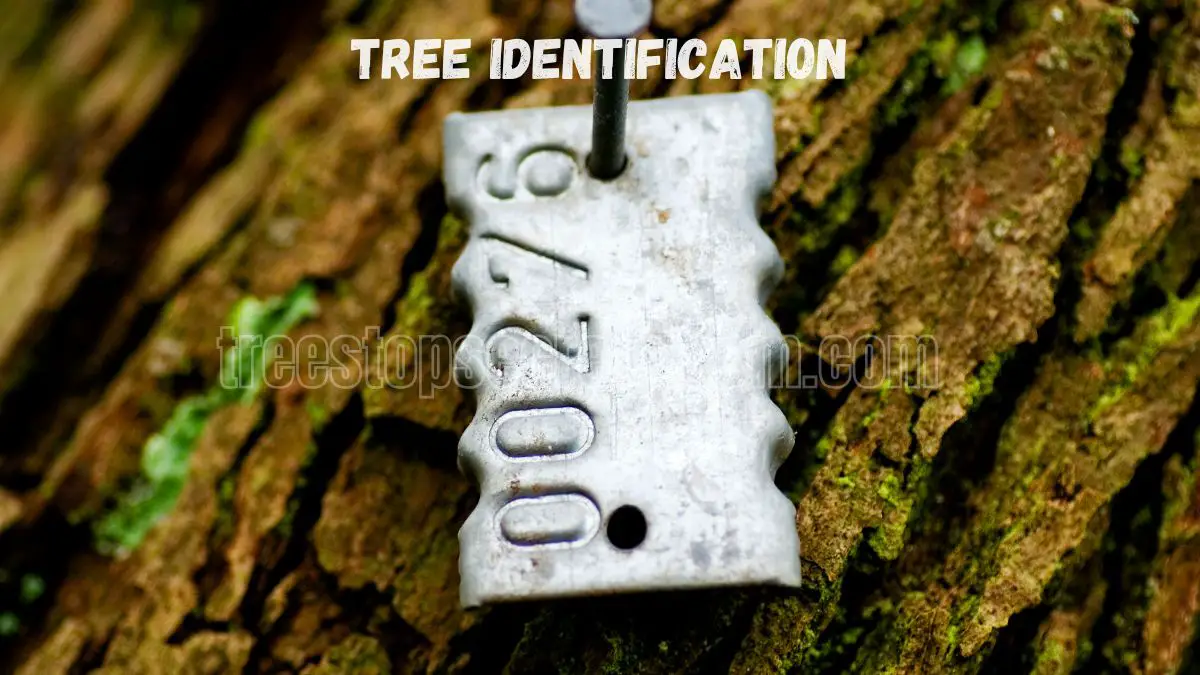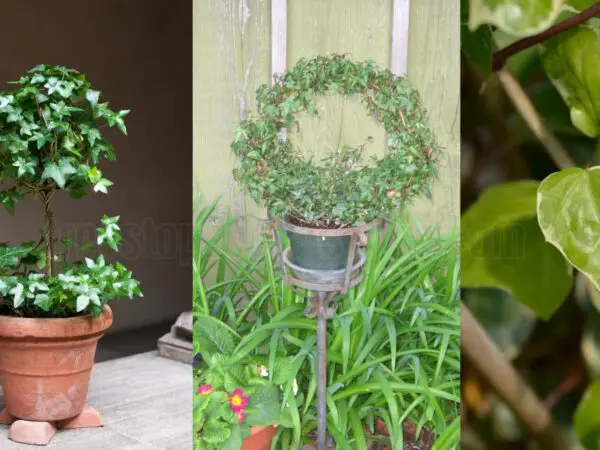Key Takeaways
- Emphasize the importance of observing key physical features like leaves, bark, and overall shape to improve tree identification. Acclimating yourself to identifying these features will increase your familiarity and comfort in identifying various tree species.
- Identify trees by learning to identify their classifications, like deciduous versus evergreen. Consider the use of common names, then genus and family names in order to orient the identification process. Doing so will allow you to narrow down your knowledge and make it easier to identify them.
- Seasonal changes can affect how trees appear at different times of the year. Looking out for these differences will help you learn how to identify trees throughout the year.
- To correctly identify a tree, employ multiple techniques such as evaluating overall tree form, bark and leaf characteristics. Using these methods together will provide you with a better overall understanding of the species you’re dealing with.
- Utilize available technology, like mobile apps and image recognition software, to support your identification pursuits. These tools can save you a lot of headache and heartache and provide you some significant gems to bolster your case.
- Get to know native and invasive trees species specific to your region. By getting to know their differences, you’ll become a better identifier. This understanding will in turn help you protect and promote the health of your local ecosystem.
Learning to identify trees is a deeply rewarding skill that brings you closer to the natural world and makes your time spent in nature more enriching. With so many species around, knowing how to recognize them by their leaves, bark, and overall shape can deepen your appreciation for the environment.
When you walk through a park or your backyard, pay attention to the diversity of trees and how each one is unique. The smooth, warm bark of a birch tells tales of a special place to live. On the other hand, oak trees with their wide, thin leaves tell a completely different story.
Grasping all these finer points doesn’t just make you a more informed apprentice, it breeds a greater stewardship of our natural surroundings. Here’s a look at some of the most important new features to help you identify trees more easily and enjoyably.
Understanding Tree Identification
Tree identification opens a world of botanical understanding, enhancing your appreciation for nature. By examining key characteristics like twig characteristics and leaf edges, you help ensure successful identification of many different tree species, including coniferous trees.
1. What are Key Physical Features?
To identify different tree species, begin with the easiest characteristics like leaves, bark, and form. Pay particular attention to the size, shape, and arrangement of leaves. For example, broadleaf trees like oaks have wide, flat leaves, whereas needle-leaf trees like pines have long, skinny needles.
Bark texture plays a significant role. Smooth bark can indicate a young tree, while rough, scaly bark suggests maturity. When combined, these unique features help make identification much easier.
2. How to Classify Trees Effectively
Developing a simplified classification system would go a long way in making identification easier. Begin by categorizing trees based on leaf type: broadleaf versus needle-leaf. Dividing trees into larger categories such as deciduous, evergreen, and conifers gives us a baseline to understand their differences.
Eudicots, which make up three quarters of all flowering species, are especially important in this classification, as they’re home to most tree families. Tree identification by using genus and family names is also a useful strategy for related species identification.
3. Why Seasonal Changes Matter
Seasonal changes are the biggest challenge to tree identification. In a deciduous tree, for instance, the absence of leaves suggests the onset of winter, which would make identification difficult without foliage.
Flowering and fruiting patterns, which change with the seasons, are another helpful identification method. Evergreen trees, which keep their leaves year-round, provide strong identification hints no matter what time of year you’re observing them.
Techniques for Identifying Trees
There are multiple techniques for effective plant identification that will enrich your experience and make you feel more comfortable identifying many trees. Tree identification by shape, bark, and foliage allows outdoor enthusiasts to quickly recognize coniferous trees and build a greater appreciation for the natural environment around them.
1. Observing Tree Form and Structure
For instance, looking at the crown shape and height of trees provides important indicators of their species. A tall, narrow tree such as a conifer is in sharp contrast to a wide spreading oak.
Form and branching patterns are very important structural aspects of trees. Some trees have a pyramidal form and others have a more rounded crown. Special characteristics like hollows or knots can help in identifying them.
2. Analyzing Bark and Texture
Characteristics of the bark show incredible variation by species, from color and texture to thickness. Younger trees can have smooth bark, but thick, rough bark usually signals maturity.
Having specific shapes or little marks can indicate certain species of trees. Outlining a checklist of these distinguishing characteristics simplifies the identification process.
3. Examining Leaves and Twigs
Leaf shapes, sizes, and arrangements, such as opposite versus alternate, are critical clues in the first steps of tree identification. Gather samples and, preferably, using a hand lens, check beneath leaf veins.
Through the lens of this technique, amazing stories of transformation emerge, particularly as foliage comes alive in autumn colors.
4. Identifying Buds, Flowers, and Fruits
Buds reveal the secrets of a tree’s identity, while flowers and fruits exhibit the remarkable diversity of many trees, including coniferous trees and deciduous trees, through the seasons. Looking for these features will help you become a year-round identification expert.
5. Recognizing Cones and Wood Characteristics
In coniferous trees, we make a distinction between those with needles and those with scales. By examining cone types and twig characteristics, outdoor enthusiasts can effectively identify different conifer species with ease.
Practical Tips for Beginners
Learning to identify trees, including coniferous trees and many native Virginia trees, is a lifelong journey that proves exciting and fulfilling. A few simple tips will help you develop your technique and better enjoy the beauty of the natural environment around you.
1. Using Simple Tools for Identification
Start out using field guides and apps made with your region in mind. Like for instance, if you live in or are visiting Asheville, don’t miss “Trees of Western North Carolina.” These resources will give you step by step guidance, including nuanced details that help identify trees quickly and easily.
One practical tip would be to carry a notebook with you to take notes and make sketches on your trips. This practice not only keeps you in tune with your memory but gives you a sense of how you’re improving over time.
When you spot a tree, pick up a yardstick or tape measure. By measuring its specific dimensions you will become more familiar with how it grows, the signs of good health vs bad health, etc.
2. Avoiding Common Misidentification Mistakes
Get comfortable identifying lookalike species, e.g., recognizing different Acer species. Watch out, as sycamore and field maple could trick you with their unlobed margins.
Just be sure to confirm traits with credible references. It’s possible to make a simple bullet list of common pitfalls, such as confusing young trees for shrubs, that ensures cleaner, safer mistakes are made.
3. Understanding Environmental Influences
Understand how variables such as soil, climate, and geographic/location affect each tree’s structure. Pay attention to everything around you.
The ecosystem provides clues that help with identification. By documenting these environmental conditions, you will gain a deeper understanding of the characteristics you see around you.
The Role of Technology in Tree Identification
Technology has transformed the process of tree identification into a more accurate and efficient practice, allowing outdoor enthusiasts to explore many trees and their unique characteristics. In an instant, you can unlock a world of knowledge on coniferous trees and other species right at your fingertips. This evolution in tree identification is beneficial not only to curious enthusiasts but also strengthens the industry expertise of professionals.
1. Utilizing Mobile Apps for Accurate ID
Mobile apps are now incredibly powerful tools for tree identification. Alternatively, you can download apps that are made for this, like Leafsnap or PlantSnap. All of these apps use advanced pattern-matching image recognition technology.
Just take a picture of a leaf or tree and you’ll receive immediate identification! For example, taking a photo of an oak leaf with your phone could instantly identify the species. A few iNaturalist, which pairs you with a global community of nature lovers to provide identification and other useful information about the flora and fauna you encounter.
2. Exploring Image Recognition Software
AI-driven software provides yet another creative solution to identify trees. Programs such as Google Lens employ cutting-edge machine learning algorithms to process images and recommend likely species. Trying a few allows you to focus on the most intuitive and accurate options.
Get a sense of how well each tool works. Some tools are better suited for identifying species native to your area, while others are more comprehensive.
3. Validating Information from Digital Resources
When using digital resources, just like when doing any kind of research, you need to verify information against several different sources. Be wary of claims made by popular online databases or resources such as the Arbor Day Foundation.
Create a tree ID checklist, or criteria, to increase the accuracy of your observations. Get real-time publishing updates, author bios with confidence qualifications, and essential publication dates to keep you on track.
Invasive vs. Native Trees
Knowing how to tell invasive tree species apart from their native Virginia trees is the first step to effective plant identification. Invasive trees, frequently introduced non-native species, threaten local biodiversity by outcompeting coniferous trees and other plants for essential resources. This can result in decreased biodiversity and changed habitats, particularly affecting the natural environment. Understanding these effects is the first step towards acting and conserving our unique local flora.
1. Identifying Invasive Species Morphologically
A great way to learn how to identify invasive species is to look closely at their morphological characteristics. The Tree of Heaven (Ailanthus altissima) … when crushed … smells a lot like roasted peanuts. Its compound leaf structure can easily lead to misidentification with our native sumac.
Look at concrete qualities like fast maturation and invasive seed or root dissemination. Finally, look at how these plants are able to really spread and take over disturbed areas. Visual aids like native vs. Invasive comparison charts really help in understanding the difference.
They are good examples of these traits compared to native trees, such as the native black walnut.
2. Recognizing Native Trees and Their Traits
The Red Maple and Eastern Oak have distinct leaf shapes. They provide critical habitat, too — for our pollinators and other wildlife. Even better, compiling a short list of species and their key identifying features will go a long way to making the process seamless.
You can easily spot a native Sweetgum from a distance by its star-shaped leaves. In comparison, the invasive Silver Maple has deeply lobed leaves and is more easily identified between the two.
Protecting our native tree species should be imperative for preserving the ecological balance. Native trees provide the ecosystem services that benefit local wildlife and enhance our environment.
Historical and Cultural Contexts
Recognizing these historical and cultural contexts gives us a deeper appreciation for these important organisms, such as coniferous trees, and how they can enrich our lives. Our historical practices and cultural context inform how we identify tree species today. Land use patterns, decisions made over 200-300 years, have a significant impact on where our trees, including many native Virginia trees, are located.
As the new settlers arrived in North America, they leveled most of the forested landscape to make way for their own agricultural pursuits. This radical transformation changed the local vegetation, including many conifer species. This history is important for understanding which species are best-suited to different areas in our current landscape.
Traditional ecological knowledge has proven integral to effective plant identification. Indigenous communities have deep ties to, and ancestral knowledge of, their local trees that have provided food, medicine, and shelter. Their struggles can inform contemporary identification practices, especially regarding native Virginia shrubs.
For example, the Cherokee Nation’s deep knowledge of the Eastern Red Cedar offers invaluable information on its uses and characteristics. Institutionally, trees are managed and governed by a web of laws and regulations.
In the Celtic tradition, the oak tree is a symbol of strength, resilience, and endurance. The willow is the symbol of resilience. Folklore plays a role in how we name trees, too, including the many features of deciduous trees. In some cultures, individual trees have been linked to myth, planting them deeper into cultural rituals.
Several cultures honor specific trees with ceremonies or community events, making them even more important. In Japan, cherry blossoms are celebrated for their ephemeral beauty. They’re equally known for being a beautiful yet sobering reminder of how transient life is.
Advanced Identification Methods
Identifying trees accurately takes more than just looking at leaves and bark. Advanced techniques provide targeted approaches to improve our knowledge of cryptic tree species. By combining these old world techniques with cutting edge scientific methods, we can obtain a degree of accuracy that was previously unimaginable.
Keeping abreast of cutting edge research developments means we’ll always have the best tools at our disposal for identification.
1. Genetic Analysis in Tree Identification
While genetic testing is not usually necessary for confirming tree species, it is essential in complex or unclear cases. For example, when two species look almost exactly the same, DNA analysis can uncover slight variations in their sequences, telling us who they really are.
Now, recent advances in genetic technology have revolutionized our ability to identify trees. Next-generation sequencing is critical to this dramatic advance. This method doesn’t just identify species, it helps reveal their evolutionary relationships, deepening our knowledge of life on Earth.
2. Combining Traditional and Modern Techniques
Merging traditional knowledge with modern technology results in a powerful identification toolkit. For example, while traditional field guides offer valuable visual cues, mobile apps can help verify species with a quick photo and analysis.
Playing around with various combinations will improve your ability to make identifications. Here’s a list of techniques to consider:
- Field guides for visual identification
- Mobile apps for instant verification
- Genetic testing for precise confirmation
- Local expert consultations for context
These identification methods combined help you to identify trees with confidence in virtually any situation. Making sure that you see the natural world around you with more detailed eyes and spirit, enabling you to explore it.
Conclusion
Once you learn to identify trees, a whole new world of wonder becomes available to you. You build a personal connection to nature and develop a greater understanding of the environment. These skills will deepen your experience whether strolling in the park or trekking in the backcountry. With a few basic skills and some practice, you can identify native species and learn to recognize their important roles in our ecosystem. Technology helps to smooth this transition, providing you with easy-to-use tools that can enhance your tree care expertise.
Whether you’re able to visit your local parks or venture into ancient forests, closer tree identification connects you to each tree’s unique story. Get ready for this journey, and let each leaf, twig, and trunk tell its tale. Download the app and begin identifying trees today, making each minute you spend outside more rewarding.
Frequently Asked Questions
What are the basic characteristics used for tree identification?
Tree identification often focuses on key characteristics such as leaf shape, bark texture, and the branching structure of many trees, including coniferous and deciduous trees. Noting the flowers and fruits found is another effective plant identification method to separate species.
Why is it important to identify trees?
Tree identification is integral to understanding the ecosystems around us, including the diverse coniferous and deciduous trees that thrive in various habitats. This knowledge promotes a culture of conservation and improves our gardening practices, inspiring curiosity about our natural environment.
How can beginners start identifying trees?
New tree enthusiasts can begin by learning to identify trees native to their area, through field guides and guided nature walks.
Developing Identification Skills
Having experience with seeing seasonal changes helps with identification.
What role does technology play in tree identification?
Technology helps—whether it’s apps like Seek or online tree databases like arborcharter.com, effective plant identification has never been more accessible. These tools not only make information about coniferous trees available at a moment’s notice, but they also create more dynamic and engaging learning experiences.
What are invasive trees, and why are they a concern?
These trends include invasive species threats that outcompete native Virginia trees, disrupting the habitat and decreasing biodiversity. Effective plant identification is necessary to alert conservation groups to protect sensitive coniferous and deciduous trees.
How do historical and cultural contexts influence tree identification?
This is where historical and cultural contexts take the practice of tree identification to another level, showcasing traditional uses and cultural significance of native Virginia trees and their habitat. Understanding this information cultivates a greater appreciation for specimens growing in our own backyards.
What advanced methods exist for tree identification?
Advanced identification methods like DNA barcoding and remote sensing technologies offer faster and more accurate options for understanding the health and biodiversity of coniferous trees and many native Virginia trees in their natural habitat.
Image Source: Paid image from CANVA




